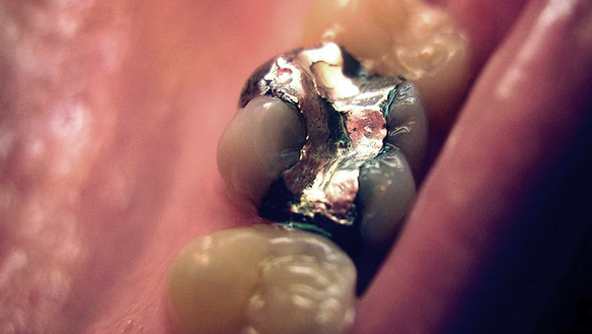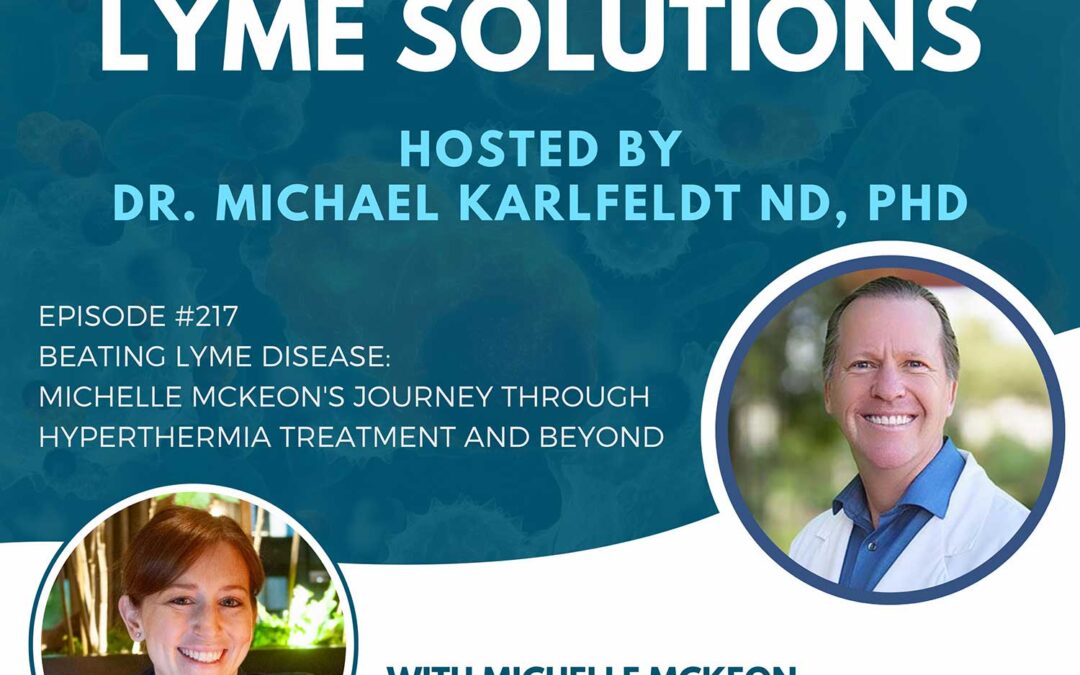In 2010, when I was first diagnosed with Lyme disease, I remember sitting in my Lyme Literate Medical Doctor’s (LLMD) office. He asked to look inside my mouth. As I opened up real wide, I thought now what is he going to find inside my mouth? Later I learned that he was checking to see how many dental amalgam or “silver fillings” I had. Well, I was hiding quite a few in there, and as my LLMD shook his head, I asked him if he had found any buried treasure? When he responded No gold just silver, I realized he was talking about my cavities.
Side Effects of Dental Amalgams
For the past 200 years dentists have used mercury as the prime component of amalgam fillings. Amalgam fillings are comprised of 45-55% of metallic mercury. This is concerning as it has been proven repeatedly that mercury can cause many health risks. Some of the toxic side effects can result in damage to the kidneys and lungs and to the nervous, digestive, cardiovascular, endocrine, respiratory, and immune systems.

While dentists all around the world continue to use dental amalgam in their practice, it is clear that there is a disconnect among physicians, dentists, and patients on the truly harmful nature of this material. The American Dental Association (ADA) teaches dentists that mercury cannot be released once it is mixed into the filling material. Unfortunately, this is completely inaccurate. There are numerous scenarios where mercury can be emitted from dental amalgam. Some ways this can happen is with stimulation through brushing your teeth, chewing, or clenching your teeth, during dental procedures, and even through the consumption of hot liquids. Also, the side effects are intensified as the number of fillings increase.
Dental amalgam can harm anyone who has them in their mouth. Though, there are many conditions that can cause people to be even more sensitive to mercury toxicity, such as Alzheimer’s disease, ALS, Autism, Chronic Fatigue Syndrome, MS, Parkinson’s disease, and Lyme disease.
Having Lyme disease myself, that was a significant concern to me. I decided to look into ways to remove the dental amalgam from my mouth. I soon realized that this was not going to be an easy feat. My LLMD recommended that I get tested for heavy metals. When I received my test results, I was not surprised that they came back high in mercury. To treat this my doctor recommended chelation therapy. Chelation is the binding of mercury and other heavy metals in the body to aid with the detoxification process. However, it is important to keep in mind chelation therapy can be very aggressive in a Lyme sensitive body. Therefore, it is advised to wait until your body is strong enough to tolerate this treatment.
The Importance of Biological Dentists
The next step for me was finding a biological dentist to remove my dental amalgam. A biological dentist recognizes that your dental health can play a major role in various health conditions and focuses on how your body functions as a whole. Their practice also understands the safest way to remove amalgam fillings without causing detrimental side effects to your health in the process.
My biological dentist took many precautions during this procedure. Prior to having my amalgams removed, I was required to take chlorella. I also took chlorella and a tincture that would help my body chelate heavy metals after the removal of my amalgams. Furthermore to help my body detoxify, I was given a vitamin C infusion directly following the procedure, and I went to an infrared sauna once a week for the next month. Dietary restrictions were also recommended during this process. I reduced my intake of fish and other foods that were high in mercury and tried to eliminate carbohydrates and sugars, as they feed oral and gut bacteria. I increased my fiber intake, which helped me eliminate waste and toxins more efficiently. Finally, increasing my water intake was key for my kidneys in flushing out toxins.
Extra safety measures were taken during the replacement of my amalgams as there is a risk of becoming exposed to mercury for the dentist, assistant, and patient. My biological dentist’s assistant constantly sprayed a stream of water in my mouth to minimize the mercury vapors. They also used a high-volume evacuator, which helped suck up the vapor and particles released during the removal process.
Throughout the procedure I was instructed to breathe through my nose and not my mouth. A dental dam was inserted in my mouth to prevent me from swallowing drilled out amalgam particles or inhaling mercury fumes. The office was also well-ventilated, and it was set up with air filters to help reduce the mercury levels. Once my amalgams were replaced, I immediately washed my mouth out, while listening to my dentist review the procedure. He explained that he uses ceramic (porcelain) to replace the amalgam fillings because it is not associated with any toxic side effects, and it does not produce any electrical currents, preventing corrosion of any other restorations in the mouth.
Research indicates that over 67 million Americans above the age of two exceed the intake of mercury vapor from the dental amalgams in their mouth that is deemed “safe” by the US EPA. That number is alarming, especially when many of those people are suffering from other chronic conditions that are only made worse by mercury exposure.
I waited a long time before going through this process, as I was very apprehensive that if my body was not strong enough to handle the procedure, I would backslide in my journey towards recovery and feel even worse. I cannot emphasize enough how important it is to wait until your body is ready and to make sure you are taking all of the appropriate safety measures when removing amalgams. Fortunately, since this procedure I have been able to reach the next step of wellness in my recovery with Lyme disease. Mercury exposure from dental amalgams is something everyone should look into, whether they currently suffer from a chronic illness or not.



